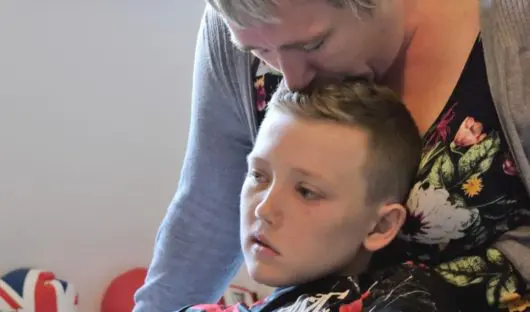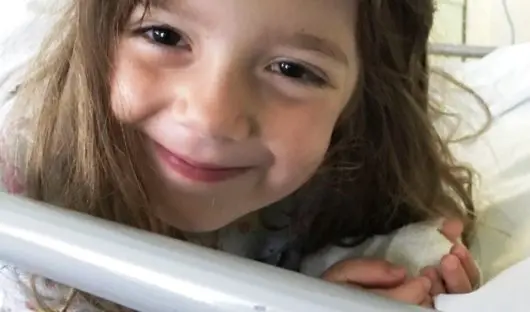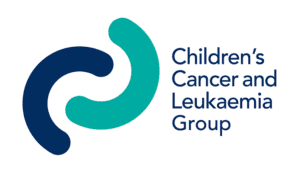Neuroblastoma
Fewer than 100 children in the UK are diagnosed each year with neuroblastoma. Most children who have this cancer are younger than five years old. Neuroblastoma is the most common solid tumour in children that occurs outside of the brain and makes up 8% of the total number of children’s cancers.
Neuroblastoma develops from the cells left behind from a baby’s development in the womb. The cells that it develops from are called neuroblasts.
- ‘Neuro’ means nerve
- ‘Blast’ means cells in early development
- ‘Oma’ means a group of cells, or a tumour.
Neuroblastoma can occur anywhere in the body. The site of origin is either in one of the two adrenal glands situated in the abdomen (tummy) or in nerve tissue that runs alongside the spinal cord, in the neck, chest, abdomen or pelvis. The adrenal glands are specialised glands that are found above the right and left kidney. The adrenal glands normally release hormones to maintain blood pressure, and enable us to respond to stress. In some cases, neuroblastoma can spread to tissues beyond the original site such as the bone marrow, bone, lymph nodes, liver, and skin.
Causes
As with most cancers, the cause of neuroblastoma is unknown. It is not infectious and cannot be passed on to other people.
Signs and symptoms
The symptoms vary, depending on where your child’s neuroblastoma tumour is.
- If the tumour is in the abdomen, your child’s tummy may be swollen and they may complain of constipation or have difficulty passing urine.
- If the tumour affects the chest area, your child may be breathless and have difficulty swallowing.
- If the tumour occurs in the neck, it’s often visible as a lump and occasionally affects breathing and swallowing.
- Occasionally, there are deposits of neuroblastoma in the skin that appear as small, blue-coloured lumps.
- If the tumour is pressing on the spinal cord, children may have weakness in the legs and walk unsteadily. If your child is not yet walking, you may notice reduced leg movements. They may also have constipation or difficulty passing urine.
- Your child may be found to have high blood pressure.
- Very rarely, children may have jerky eye and muscle movements, and general unsteadiness associated with the neuroblastoma.
There are often vague and non-specific associated symptoms of tiredness, pallor, loss of appetite, weight loss, bone pain and generalised discomfort.
How is neuroblastoma diagnosed?
A variety of tests and investigations will be needed to diagnose neuroblastoma. These include a biopsy of the tumour, blood and bone marrow tests, x-rays, CT or MRI scans, and a special nuclear medicine scan called an MIBG scan (see below). These tests are carried out to confirm the diagnosis of neuroblastoma, and to find the exact position of the original site of neuroblastoma within the body and to see whether it has spread. This process is known as staging.
A specific type of urine test will also be done. Nearly all children with neuroblastoma (9 out of 10) will have substances called vanillylmandelic acid (VMA), or homovanillic acid (HVA), in their urine. Measuring the VMA and HVA in the urine can help to confirm the diagnosis. Your child will also have their VMA and HVA levels checked during and after treatment. The levels of these substances will fall if the treatment is working. As these chemicals are produced by the tumour cells, and can be used to measure tumour activity, they are sometimes known as tumour markers.
Most children will have an MIBG (meta-iodo-benzyl guanidine) scan. MIBG is a substance that’s taken up by neuroblastoma cells. It’s given by injection into the bloodstream. Attaching a small amount of radioactive iodine to the MIBG enables any neuroblastoma tissue to be seen by a radiation scanner. Sometimes MIBG can be used as a treatment.
Biopsy
A small sample of cells (a biopsy) is usually taken from the tumour during an operation under a general anaesthetic. These cells are then examined under a microscope. Other tests collectively referred to as tumour biology, look at the chromosomes and ‘biological markers’ in the tumour cells.
One of these ‘markers’ is called MYCN. The presence of a certain amount of MYCN in the cells (known as MYCN amplification) can suggest that the neuroblastoma may be a more aggressive type. In this situation, the treatment needs to be more intensive.
Staging
The ‘stage’ of a cancer is a term used to describe its size and whether it has spread beyond its original site. Knowing the particular type and stage of the cancer helps the doctors to decide on the best treatment for your child.
A commonly-used staging system for neuroblastoma is described below:
Stage 1: The cancer is contained within one area of the body (localised) and there’s no evidence of it having spread. It can be completely removed by surgery, or there may be very small (microscopic) amounts of tumour left.
Stage 2A: The cancer is localised and has not begun to spread, but cannot be completely removed by surgery.
Stage 2B: The cancer is localised and has begun to spread into nearby lymph nodes.
Stage 3: The cancer has spread into surrounding organs and structures, but has not spread to distant areas of the body.
Stage 4: The cancer has spread to distant lymph nodes, bone, bone marrow, liver, skin or other organs
Stage 4S (also called special neuroblastoma): This stage of neuroblastoma is found in children under one year old. The cancer is localised (as in stage 1, 2A or 2B) and has begun to spread to the liver, skin or bone marrow.
A newer staging system has been developed by the International Neuroblastoma Risk Group (INRG). This system (described below) is now widely used. It looks at whether or not certain ‘image-defined risk factors’ are present in a neuroblastoma tumour before treatment. These risk factors can be detected by scans and help doctors understand the extent of the disease. Your doctor can explain more about this.
Stage L1: The tumour is localised and has not spread into important areas (vital structures) nearby. It can be removed by surgery.
Stage L2: The tumour is localised but has ‘image-defined risk factors’ and can’t be safely removed by surgery.
Stage M: The tumour has spread to other parts of the body.
Stage MS: The tumour has spread to the skin, liver and/or the bone marrow in children younger than 18 months old.
If the cancer has spread to distant parts of the body, this is known as secondary or metastatic cancer. If the cancer comes back after initial treatment, this is known as recurrent or relapsed cancer.
Treatment
The treatment of neuroblastoma depends on the age of the child, the size and position of the tumour, the tumour biology (including the MYCN status) and whether the neuroblastoma has spread.
Surgery
For tumours that have not spread (localised tumours), the treatment is usually surgery. If the tumour is at an early stage and there is no evidence that it has spread to the lymph nodes or any other parts of the body, an operation to remove the tumour, or as much of it as possible, will be undertaken. If the tumour is, at first, too large or in too difficult a position to remove safely, chemotherapy will be given to shrink it before surgery. A cure is usually possible for children with localised tumours. However, if a localised tumour is classed as ‘high-risk’, due to the tumour biology results, additional treatment with chemotherapy and usually radiotherapy will be needed.
Chemotherapy
If the tumour has already spread by the time of diagnosis, or is indicated as being high-risk by the tumour biology result, intensive chemotherapy is needed. Chemotherapy is the use of anti-cancer drugs to destroy cancer cells. It is usually given as an infusion into a vein. Your child will have a semi-permanent cannula called a central venous line inserted under a general anaesthetic to minimise the distress caused by intravenous injections.
Your child’s specialist will discuss with you the type and amount of chemotherapy needed.
High-dose chemotherapy with stem cell rescue
If the neuroblastoma has spread to several parts of the body, or is high-risk with MYCN amplification, high dose chemotherapy with peripheral blood stem cell rescue is used after the initial courses of chemotherapy.
High-dose chemotherapy will wipe out any remaining neuroblastoma cells but will also wipe out the body’s bone marrow, where blood cells are made. To prevent the problems this causes, stem cells (blood cells at their earliest stages of development) are collected from your child through a drip before the chemotherapy is given.
These stem cells are then frozen and stored until required. After the high-dose chemotherapy, the stem cells are given back to your child through a drip. They make their way into the bone marrow, where they grow and develop into mature blood cells over a period of 14–21 days.
Monoclonal antibody treatment
Monocolonal antibodies can destroy some types of cancer cells while causing little harm to normal cells. In the UK, patients with High Risk Neuroblastoma treated in the (SIOPEN) European High Risk Clinical Trial receive immunotherapy with a monoclonal antibody called anti-GD2 after their high dose therapy. There is good evidence from a clinical trial (research study) carried out in America, which was first reported on in 2009, that this may be a promising therapy when given alongside standard treatment for neuroblastoma.
The anti GD2 is either given on its own or with cytokines. It is not yet a standard treatment for patients with neuroblastoma as it has very unpleasant side effects, the benefits need to be fully proven and the best way to administer it needs to be established. It is therefore currently only available to patients in the UK who are being treated within a clinical trial. Your child’s specialist will be able to tell you much more about this treatment.
At present, antibody treatment is given in combination with a medicine taken by mouth called retinoic acid. This medicine helps to stop cancer cells from growing and instead helps them to develop into non-cancerous cells.
Radiotherapy
External beam radiotherapy may be given if the neuroblastoma is high-risk, or has spread to several parts of the body. This uses high-energy rays to destroy the cancer cells, while doing as little harm as possible to normal cells. External beam radiotherapy is given from a machine outside the body. Internal radiotherapy may sometimes be given using radioactive MIBG. Radioactive MIBG is similar to the MIBG used in an investigation to diagnose a neuroblastoma, but uses higher doses of radioactivity to kill the cancer cells.
Younger children
Children under 18 months old with neuroblastoma often have ‘low-risk’ tumours, and as long as there is no MYCN amplification, their outlook is excellent. Most children in this age group are cured.
Children with Stage 4S disease almost always get better with very little treatment or none at all. These tumours either regress spontaneously or after chemotherapy, which is only given if there are symptoms from the tumour. They disappear completely or develop into a non-cancerous (benign) tumour, called a ganglioneuroma. Many of these children, after their initial diagnostic tests and staging investigations, will just need careful monitoring for some years. Ganglioneuromas are usually harmless and will not cause any problems and do not need any treatment.
This information was written by the Children’s Cancer and Leukaemia Group (CCLG)
You may also want to look at
Telling your child they have cancer
Knowing what information your child needs and which words to use when you tell them about cancer.
Find out more
Staying in hospital with your child – what you’ll need
What to expect if your child is staying on a children' cancer ward and what you'll need to take.
Find out more
Help your child cope with side effects of cancer treatment
Every child copes differently with treatment and side effects. Here's what to expect.
Coping with side effects
USEFUL INFORMATION AND SUPPORT
Get a CLIC Sargent grant
It’s not right that young people and parents have to worry about money when they need to focus on treatment and all that comes with it. So CLIC Sargent gives various grants, right from the moment of diagnosis, to help young people and families cope financially.
Find out more about getting a grantChildren's Cancer and Leukaemia Group (CCLG)
Find more detailed information about neuroblastoma, including diagnosis, staging and treatment from our friends at CCLG.
Visit the websiteJoin our Facebook group for parents
Share your stories and experiences with other parents. Get advice or share tips to help others, and become part of a supportive community.
Join the groupAre you a cancer dad?
Many dads spend less time in the hospital and don't get the same network of support. Feeling like you have to 'hold the fort' can be isolating and difficult, so it's extra important you have someone to talk to about your challenges.
Join our Mind the Chaps Facebook group for dads